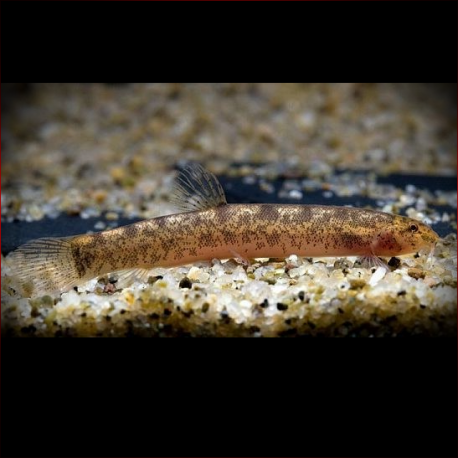More info
Datasheet
| Minimum Tank Size | 40 litres / 10.57 US gallons |
| Maximum Size | 3.9cm / 1.54inches |
| Temperature | 23°C / 73.40°F - 29°C / 84.20°F |
| Hardness | 0.00dgH / 0ppm - 8.01dgH / 143ppm |
| pH | 3.5-7.0 |
General Description
Lepidocephalichthys Tomaculum, a member of the Cobitidae family under the classification order Cypriniformes, is a species characterized by its truncate caudal fin, scaleless patch on the head, and reddish-brown body with darker markings. These small fish, reaching a maximum size of 3.9cm, are known for their unique features such as reticulated patterning on the caudal fin and thin, transverse dark bars running across the dorsal surface.
Aquarium Setup
To properly house Lepidocephalichthys Tomaculum, a soft, sandy substrate is essential as they spend time burying themselves partially. Coarser gravel can stress or injure the fish. Decorate the tank with water-worn rocks, driftwood branches, and tree roots to create hiding spots. Dim lighting is suitable, and adding leaf litter enhances the natural habitat feel. Avoid high flow rates in the water but ensure adequate oxygenation. Prevent small fish from entering filter intakes and secure the tank to prevent jumping, a behavior common in loaches.
Behaviour
These peaceful fish coexist well with conspecifics and other tankmates, although they may consume eggs or fry. Keeping them in groups of four or more is ideal, promoting a sense of security. Lepidocephalichthys Tomaculum can be less timid when housed alongside fishes from similar upper water column environments. They exhibit interesting behaviors like darting to the surface for atmospheric air intake under certain conditions, showcasing their adaptability.
Feeding and Diet
Lepidocephalichthys Tomaculum are micropredators, feeding on insect larvae and small crustaceans. In the aquarium, they accept sinking dried foods but thrive on a diet of live or frozen fare such as Daphnia and bloodworms. Offering a variety of foods ensures their nutritional needs are met and mimics their natural feeding habits.
Reproduction & Dimorphism
While presumed to be seasonal spawners in nature, Lepidocephalichthys Tomaculum has not been successfully bred in captivity. Mature males display sexual dimorphism with enlarged pectoral fins forming a structure called lamina circularis. Adult females are typically larger and heavier-bodied than males, exhibiting distinct physical differences.
Habitat and Distribution
In the wild, Lepidocephalichthys Tomaculum inhabits shallow, slow-moving streams, freshwater swamps, and backwaters with soft substrates and abundant vegetation. Found in states of Peninsular Malaysia and possibly in Sumatra, their distribution is limited to specific regions characterized by unique environmental conditions such as low pH levels and varying water clarity.



